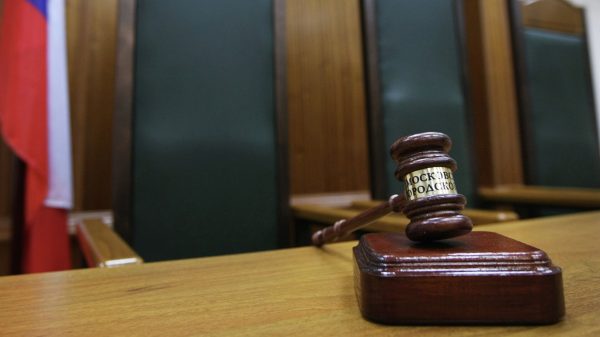More than 10,000 people who Ohio believed had “abandoned” their voter registration cast ballots in the 2020 election, raising more concern that officials are using an unreliable and inaccurate method to identify ineligible voters on the state’s rolls.
In August, Ohio’s Republican secretary of state, Frank LaRose, released a list of 115,816 people who were set to be purged after the November election because the election officials in each of Ohio’s 88 counties flagged them as inactive. Voters could remove their name from the list by taking a number of election-related actions, including voting, requesting an absentee ballot, or simply confirming their voter registration information.
Last week, LaRose’s office announced that nearly 18,000 people on the initial list did not have their voter registration canceled, including 10,000 people who voted in the November election. About 98,000 registrations were ultimately removed from the state’s rolls, LaRose’s office announced last month. There are more than 8 million registered voters in the state.
In a statement, LaRose said the fact that so many people prevented their voter registrations from being canceled is a success of the state’s unprecedented efforts to notify voters at risk of being purged. But voting rights groups say the fact that Ohio nearly purged thousands of eligible voters is deeply alarming and underscores the inaccurate and haphazard way the state goes about maintaining its voter rolls.
Fight to vote: Biden moves to fix US census less than 24 hours after taking office
Read more
“If we have 10,000 people who on their own volition are voting, we know that there’s probably many more who are still living, breathing, eligible Ohioans, who also have not moved, who also have been removed from the rolls,” said Jen Miller, the executive director of the Ohio chapter of the League of Women Voters.
Federal law requires states to regularly review their voter lists for ineligible voters, but Ohio has one of the most aggressive processes for cancelling registrations in the United States. A voter can be removed from the rolls if they don’t vote or undertake any political activity for six consecutive years and fail to respond to a mailer asking to confirm their address after the first two.
Voting advocates argue Ohio’s process essentially removes people from the rolls because they don’t vote, which is prohibited under federal law, and is more likely to target minorities and the poor. The US supreme court upheld the Ohio process in a 5-4 decision in 2018.
Naila Awan, a lawyer at Demos, a civil rights thinktank that helped challenge the Ohio process at the US supreme court, said she wasn’t surprised that eligible voters were flagged on the August list of people at risk of being purged.
“Voting inactivity is a really poor proxy for identifying individuals who may have become ineligible by reason of having moved. The data across the board shows that this is fundamentally a flawed process and there has to be something better to use,” she said.
The recent purge marks the second time in recent memory that Ohio has nearly purged scores of eligible voters from its rolls. Months ahead of a scheduled purge in 2019, the state released a list of 235,000 people who were set to be removed from the rolls. Voting rights groups found more than 40,000 eligible voters included on it and were able to prevent them from being removed.
Democratic and Republican officials alike have overseen purging for years in Ohio, but a 2016 Reuters analysis illustrated the way the practice can disproportionally hurt Democrats. In the state’s three largest counties, voters in Democratic-leaning neighborhoods were struck from the rolls at twice the rate of those in GOP areas, the analysis found. In heavily Black areas of Cincinnati, more than 10% of voters were removed from the rolls between 2012 and 2016 because of inactivity, compared with just 4% in one of the city’s suburbs.
In the months before the 2020 election, Keizayla Fambro, an organizer with the Ohio Organizing Collaborative, a grassroots group that focuses on empowering people of color in the state, was focused on voter registration in counties that are home to some of Ohio’s biggest cities. She estimated her group encountered one to two people a week who were on the purge list and whom they urged to update their voter registration.
“We would check them on a name and we would be like, ‘Oh my God, your voter registration needs to be updated, you could have been purged,’” she said. “Honestly, it was coincidence.”
For those who move a lot, updating a voter registration was often the last thing they were thinking about, Fambro said. “You’re thinking about, ‘Oh, I have to get my kid in this school. I have to make sure we have somewhere to sleep,’” she said.
People of color, the poor, non-English speakers and minorities also tend to experience more severe barriers in getting to the polls, making them more likely to be flagged for purging under a system that relies on inactivity, Awan said.
“When you’re using something like the number of elections a person has missed, you’re going to, by necessity almost, be disproportionately targeting people who experience more barriers getting to the polling locations to begin with,” she said.
Miller and other voting advocates have praised LaRose for taking the unprecedented step of making the purge list public months ahead of the removals to give voters adequate time to check their voter registration. But simply making the list public isn’t adequate, they say, especially because the increased transparency has underscored the way Ohio’s process can flag eligible voters for potential cancellation.
“Before LaRose, we didn’t have any transparency, so we appreciate that. But what the transparency is doing is actually confirming that there are a lot of living, breathing Ohioans who are getting wrapped up in this process who shouldn’t be,” Miller said.
“It’s been frustrating because to me he’s gotten this false praise of, ‘Oh, he opened up the list for the first time,’ which is all fine and dandy. To me, opening up, being transparent, doesn’t mean anything if you don’t have accountability,” said Bride Rose Sweeney, a Democrat in the Ohio state house of representatives.
LaRose has called for more reform, focusing on centralizing and updating Ohio’s voter registration system. He has backed adopting automatic voter registration, which would help prevent wrongful purging by requiring state agencies to automatically update voter registration when they interact with eligible voters. Currently, counties are responsible for maintaining their voter rolls and compiling lists of people eligible to be purged, a system LaRose told USA Today last year was “prone to error” and “unacceptably messy”.
“The secretary believes there are improvements to be made to the process. I certainly hope you include them in your story,” Maggie Sheehan, a LaRose spokeswoman, told the Guardian.
Some changes are already in place. While the state used to only send voters one notice asking them to confirm their voter registration records, it recently started sending a second, final confirmation notice 30-45 days before the purge takes place. The state also announced in 2018 that voters at risk of being purged could confirm their addresses when they updated their driver’s licenses.
But the fact that Ohio flagged so many eligible voters for removal despite those reforms is still alarming, said Stuart Naifeh, another Demos lawyer involved in the 2018 supreme court case.
LaRose has insisted the purge process is outlined in state law, limiting any changes he can make. But advocates dispute that characterization, noting that LaRose has the authority to improve the process. State law does require officials to remove anyone who receives a confirmation mailer and doesn’t vote for four consecutive years from the rolls, but it doesn’t specify what triggers the confirmation notice. By relying on more reliable evidence that someone has moved, instead of two years of voting inactivity, LaRose could significantly improve the accuracy of the purge process, critics say.
“He is not required by law to do this … State law allows it, it’s not barred,” said Sweeney, the Ohio state representative. “He is choosing to make this a more expansive process.”
















































Свежие комментарии